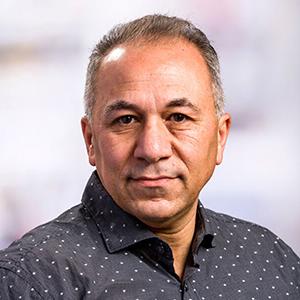Multi-modal Immunotherapeutic Targeting of AML-restricted Targets in Infants and Children

Soheil Meshinchi
PhD, MDFred Hutchinson Cancer Research Center
Project Term: October 1, 2021 - September 30, 2026
Advances in understanding and management of AML in children has been stagnant for decades. Observed improvements in survival are more directly linked to improvements in supportive care or risk identification rather than advances in therapeutics. Excitement around FDA approval of two new IDH1/2 inhibitors did not reach the pediatric oncology community given paucity or absence of such mutations in children. This also highlights the stark differences between AML in older adults and that in younger patients. Thus, “trickle down therapeutics” where therapies that are developed in older adults are used effectively in children is a flawed concept. Discoveries and therapeutic development in younger patients must be prioritized if meaningful advances are to be made in curing AML in younger patients. Given that AML in children is not a priority for the pharmaceutical companies, alternate mechanisms for advancing therapeutics in children and young adults should be implemented.
In order to facilitate discovery of therapeutic targets in childhood AML, we performed whole genome and transcriptome sequencing of diagnostic and relapse specimens from over 2,000 children as well as a collection of normal hematopoietic cells. The availability of the data from normal specimens allows identification of targets only expressed in AML (not expressed in normalcells). This analysis identified over 240 genes that are silent in normal hematopoiesis but are highly expressed in a significant subset of cases of childhood AML.
These previously identified targets (NCAM1, CLEC2A and CRLF2) have AML restricted expression, expressed in high risk cohorts, and are transmembrane proteins, makes them ideal candidates immunotherapeutic targeting with antibody-drug conjugates (ADC; project 1), chimeric antigen receptor T-cell therapy (CARTs; project 2) or with Bispecific T-cell Engagers (BiTEs; project 3). Given the urgency of developing therapies for high risk childhood AML, we propose to pursue all three therapeutic modalities in parallel (instead of sequentially), where ADCs, CARTs and BiTEs are developed for each of these targets (Projects 1, 2 and 3, respectively) and evaluated for in vitro and in vivo efficacy in the appropriate models systems in parallel. The vision is that this “multiple shots on goal” approach will expedite simultaneous development of multiple therapeutic modalities in order to select one therapy to advance to clinical development (project 4).
We are highly optimistic that, by the end of the SCOR funding period, we will have one or more viable therapies for children with high risk AML to advance to clinical trial stage.